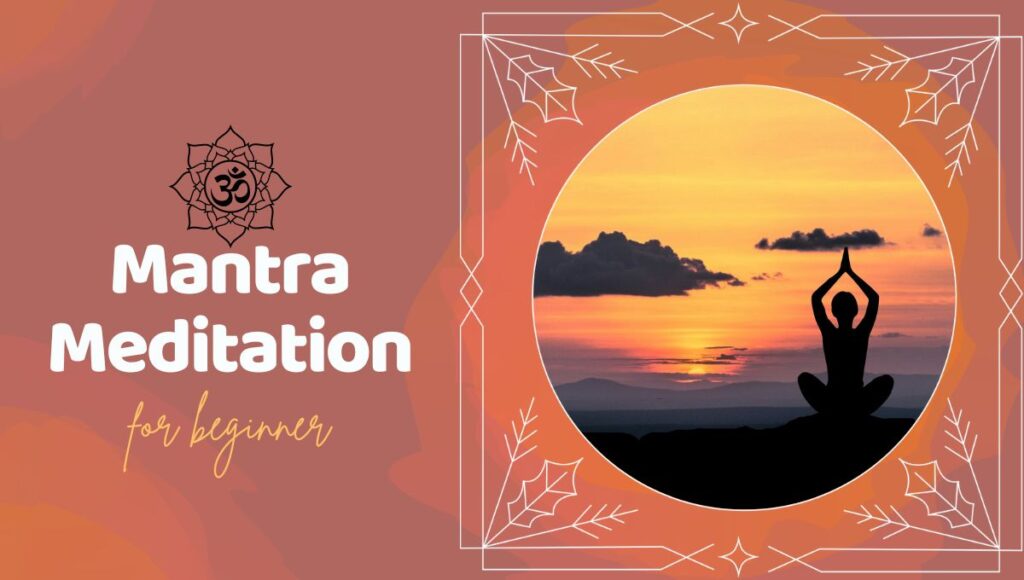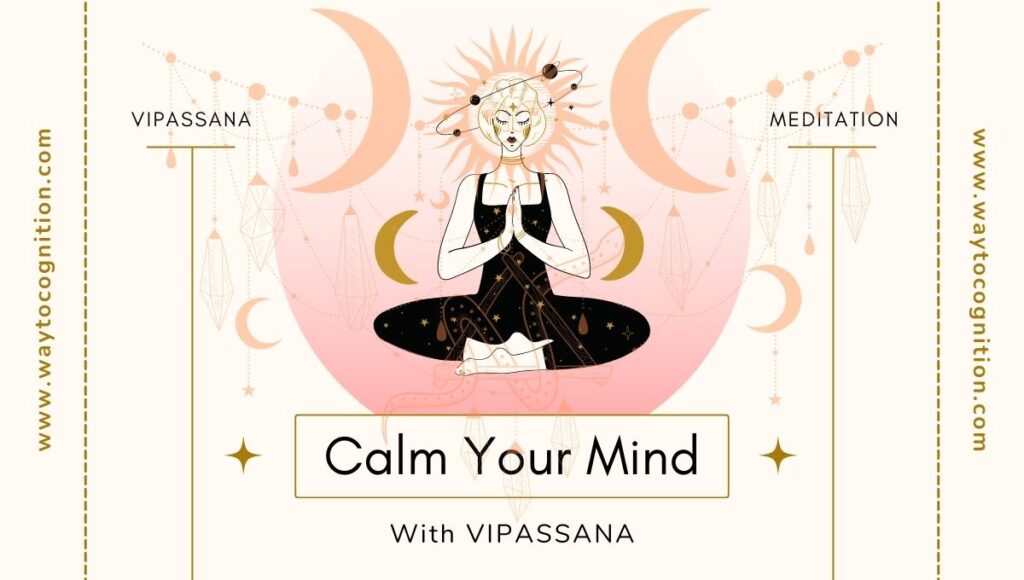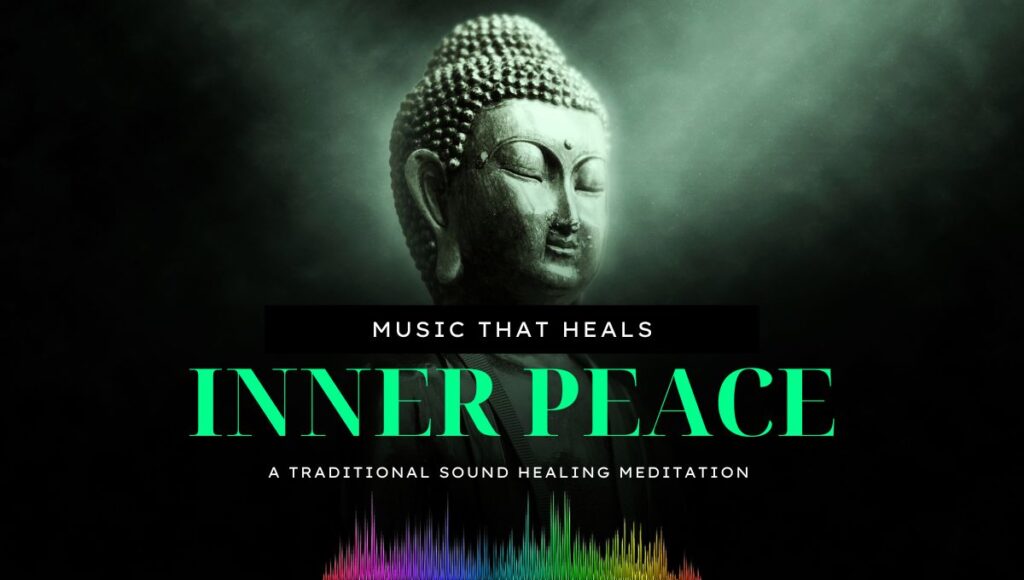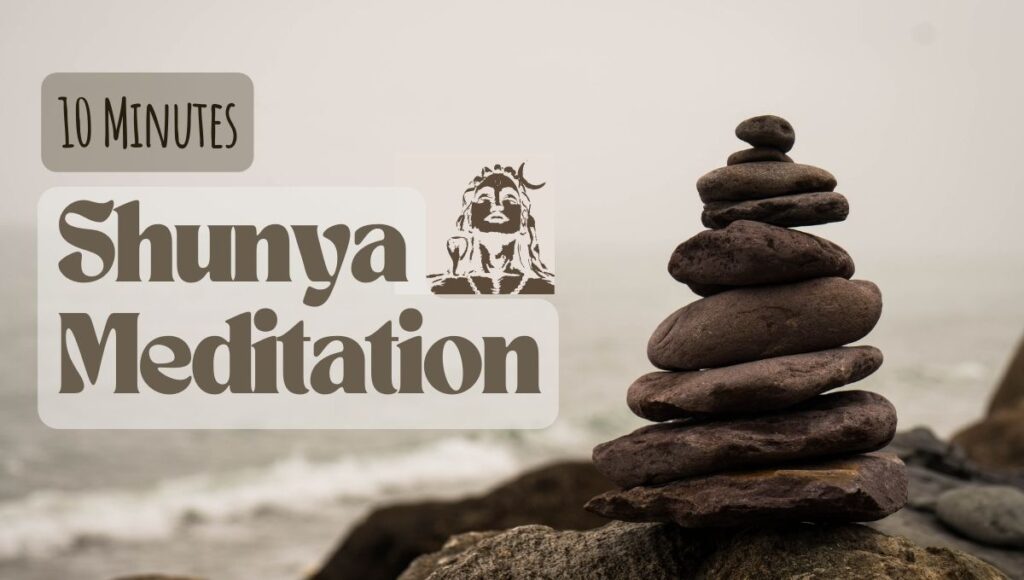Anxiety-Proof Mind: Ultimate Guide to 4 Effective Meditation
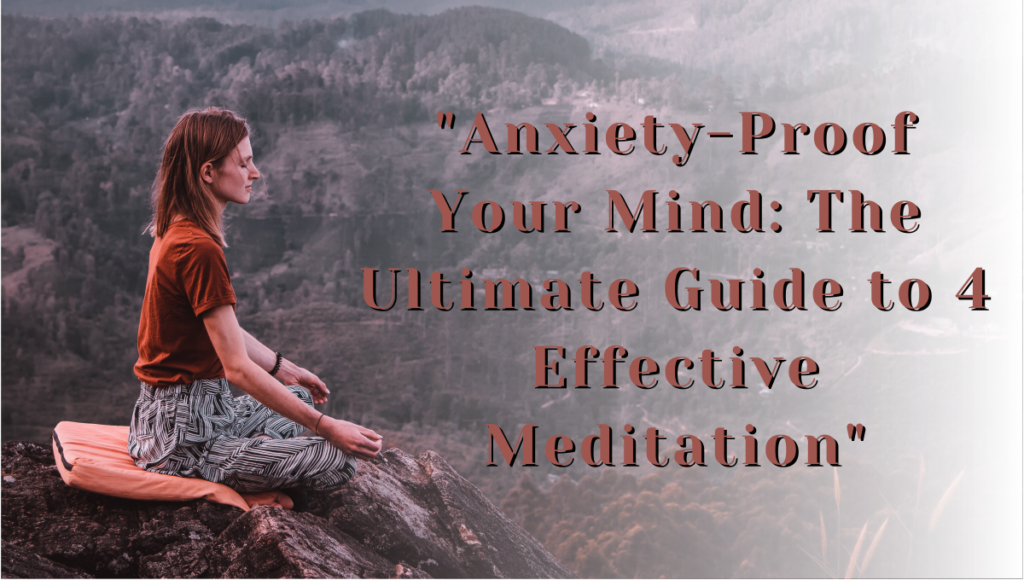
Introduction:
Welcome to our comprehensive guide on meditation for anxiety. In today’s world, anxiety is a common challenge for many people. Meditation has become increasingly popular in recent years as a way to manage anxiety. and for good reason. Its numerous benefits extend beyond relaxation and stress relief, encompassing mental clarity, emotional well-being, and overall personal growth.
Whether you’re seeking to calm your mind, enhance self-awareness, or cultivate inner peace, meditation can be a transformative practice. In this ultimate guide for beginners, I will share practical insights and techniques to help you start your meditation journey with confidence and clarity and specifically how to use it to overcome anxiety.
Whether you’re new to meditation or seeking to deepen your practice, this ultimate guide will equip you with the knowledge and tools you need to find inner peace and calm amidst the chaos.
Understanding Anxiety
Before we dive into the world of meditation, it’s essential to understand anxiety and its impact on our lives. Anxiety is a natural response to stress and can manifest as feelings of unease, worry, or fear. While it’s normal to experience occasional anxiety, persistent anxiety can interfere with daily activities and overall well-being.
I. Understanding the Basics of Meditation:
Meditation is a practice that involves training the mind to achieve a state of focused attention and inner stillness. Research has shown that it is often associated with relaxation and stress reduction, but its benefits extend far beyond that. Meditation is rooted in ancient traditions and is found in various forms across different cultures and religions.
At its core, meditation is about cultivating mindfulness, which is the ability to be fully present and aware of the present moment without judgment. It involves intentionally directing your attention and becoming aware of your thoughts, sensations, and emotions as they arise, without getting caught up in them. Through regular practice, meditation can help quiet the mind, bring a sense of calm and clarity, and deepen self-awareness.
Getting started with meditation
A. Finding a Quiet and Comfortable Space:
Creating a serene environment is essential for successful meditation. Choose a space where you feel at ease and can disconnect from external distractions. It could be a spare room, a cozy corner in your home, or even a spot in nature. Decorate the space with elements that promote tranquility, such as soft lighting, cushions, or candles.
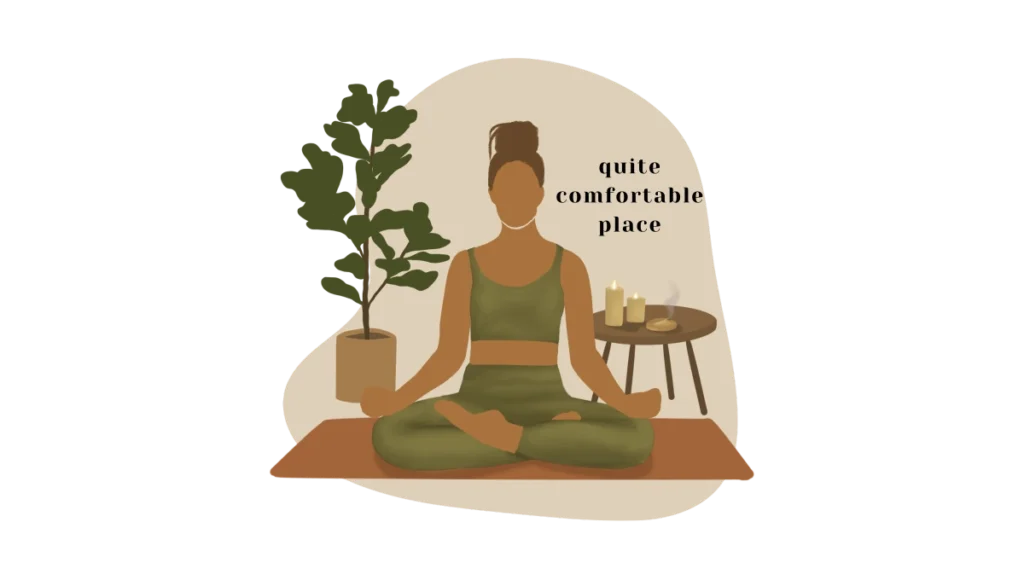
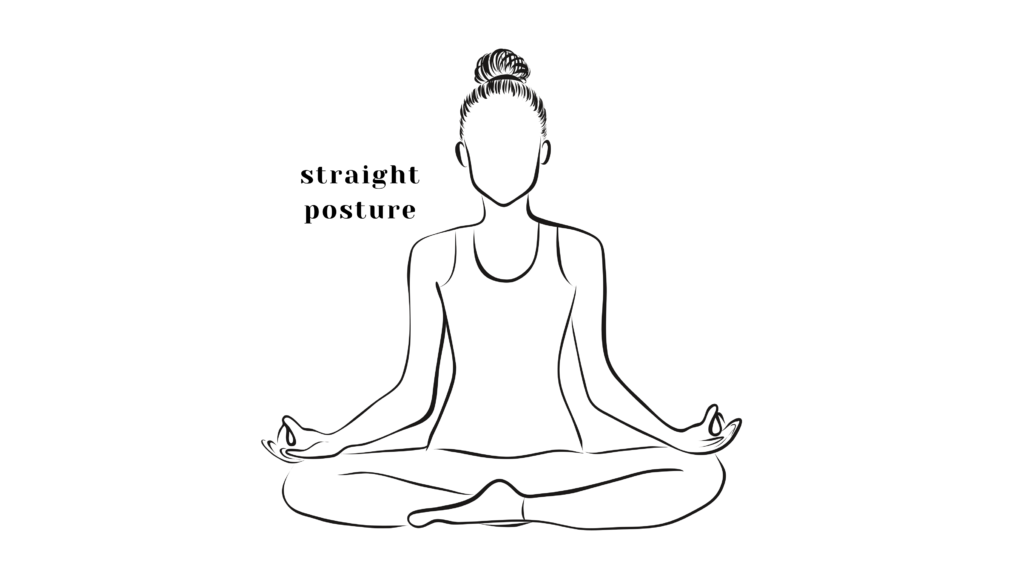
B. Posture and Positioning:
While there’s no one-size-fits-all approach, finding a comfortable posture that supports alertness and relaxation is key. You can choose to sit on a cushion or a chair, cross-legged on the floor, or even kneel. The important thing is to maintain an upright posture, aligning your head, neck, and spine. This posture promotes a sense of groundedness and openness for the meditation practice.
C. Breathing Techniques:
Conscious breathing serves as an anchor for your meditation practice, allowing you to stay present and centered. Begin by taking slow, deep breaths, focusing your attention on the sensation of the breath entering and leaving your body. As you breathe, let go of any tension or stress, allowing your body and mind to relax. You can experiment with different breathing techniques, such as counting breaths or incorporating gentle pauses, to deepen your awareness and cultivate a sense of calm.

II. Preparing for Meditation:

A. Setting Intentions:
Before each meditation session, take a moment to clarify your intentions. Reflect on why you are meditating and what you hope to achieve. It could be finding inner peace, reducing anxiety, or simply exploring a deeper connection with yourself. By setting intentions, you establish a purpose and focus for your practice, guiding your mindset and allowing for a more meaningful experience.
B. Time and Duration:
Finding the right time to meditate is a personal choice. Some people prefer starting their day with meditation to set a positive tone, while others find evenings more conducive to relaxation and reflection. Experiment with different times and discover what works best for you. As a beginner, aim for shorter sessions of 5 to 10 minutes and gradually increase the duration as you become more comfortable and confident in your practice.

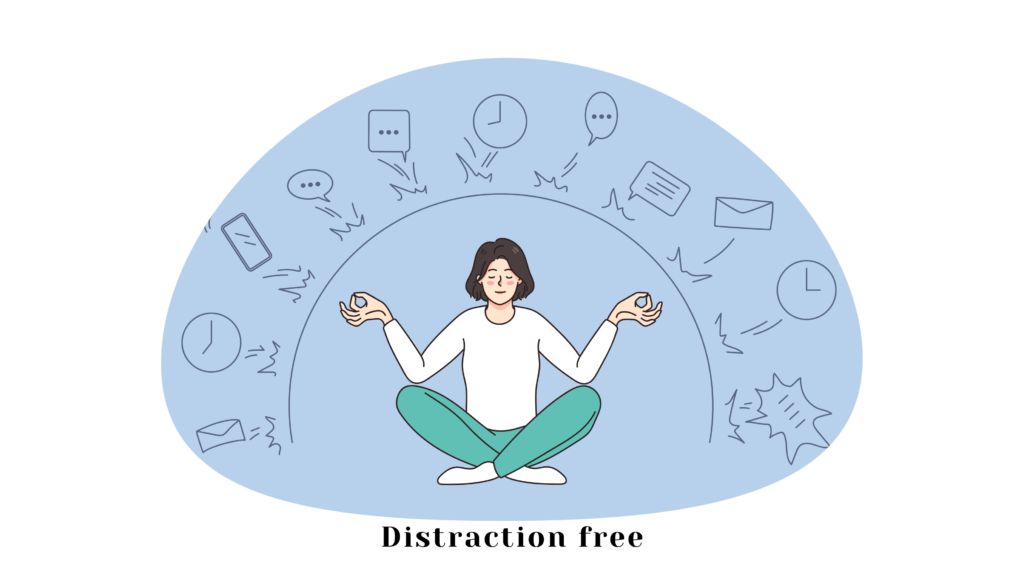
C. Minimizing Distractions:
In our modern world filled with constant stimulation, minimizing distractions is essential for a successful meditation practice. Silence or mute your electronic devices to create a sacred space free from interruptions. If external noises persist, consider using earplugs or playing soothing instrumental music to create a calming atmosphere. Additionally, acknowledge and gently let go of any internal distractions, such as thoughts or worries that arise during meditation. Remember, meditation is not about eliminating thoughts, but rather observing them without judgment and returning to your point of focus, be it the breath or a mantra.
III. Techniques for Meditation:
A. Mindfulness Meditation:
Mindfulness meditation involves paying attention to the present moment without judging the thoughts that come into the mind during meditation. It is a simple yet powerful practice that can help you reduce stress, improve your focus and concentration, and increase your self-awareness.
To practice mindfulness meditation, find a quiet place where you will not be disturbed. Sit in a comfortable position, either on the floor or in a chair. Close your eyes and take a few deep breaths. As you inhale, say “So” to yourself, and as you exhale, say “Ham.” This is a traditional and powerful way to meditate that is associated with Lord Shiva.
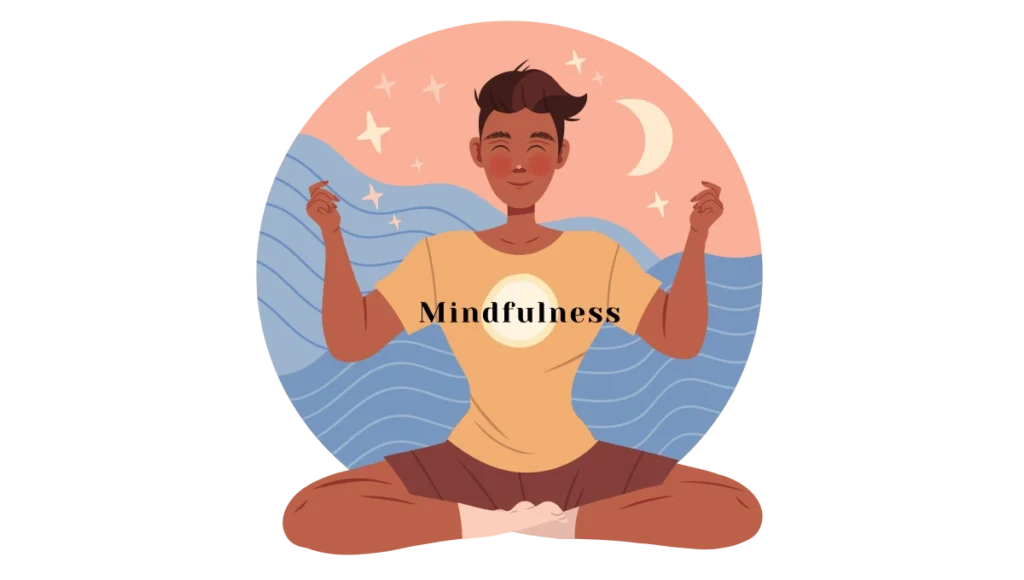
Continue to focus on your breath, gently bringing your attention back to it whenever your mind wanders. There is no need to judge or criticize yourself for your thoughts; simply observe them and let them go. (Ignoring the thoughts – ‘How’ is written in “Overcoming Challenges and Fostering Consistency” below.).
As you do this, you will notice that your breaths will naturally become shorter and shorter. You may feel the urge to breathe deeply but don’t force it. Just let your breath flow naturally. You can practice mindfulness meditation for any length of time, but even a few minutes can be beneficial. If you find it helpful, you can also listen to a guided mindfulness meditation recording.
There are many benefits to mindfulness meditation, including:
- Reducing stress and anxiety.
- Improving focus and concentration.
- Increasing self-awareness.
- Enhancing emotional regulation.
- Promoting compassion and kindness.
- Improving sleep quality.
- Boosting creativity.
- Increasing happiness and well-being.
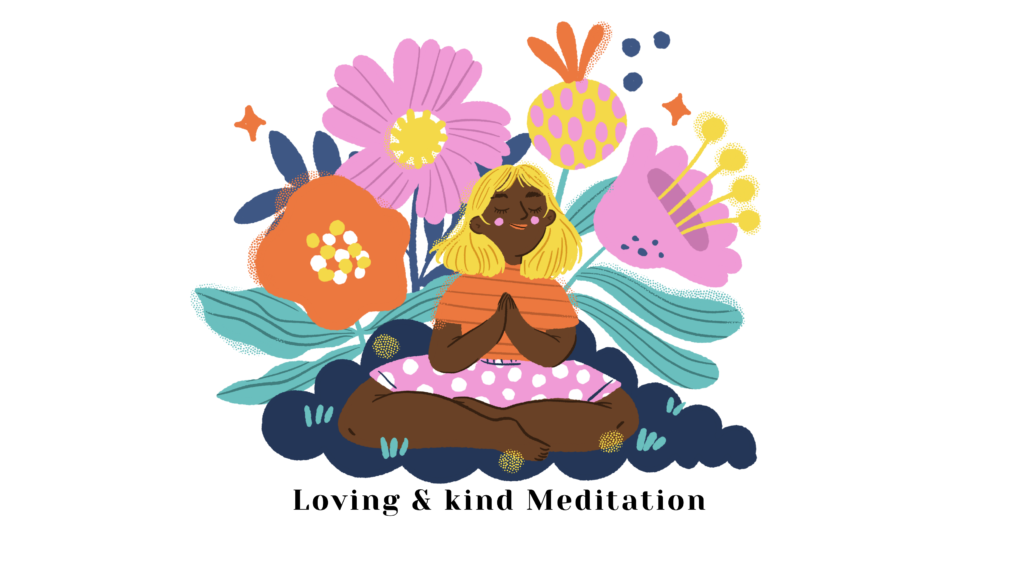
B. Loving-Kindness Meditation:
Loving-kindness meditation, also known as metta meditation, involves generating feelings of love, compassion, and goodwill toward yourself and others. Start by directing kind and loving thoughts towards yourself, wishing for your own well-being, happiness, and peace. Then, expand your focus to include loved ones, friends, acquaintances, and even those with whom you may have challenges or conflicts.
Gradually extend these feelings of kindness and compassion to encompass all beings. Show gratitude to anyone who gave you something valuable, whether it is advice or materialistic help that somehow helped you to grow in your life. This practice cultivates empathy, reduces negativity, and fosters a sense of interconnectedness with the world around you.
To practice LKM, you will need to find a quiet place where you will not be disturbed. You can sit in a chair or on the floor, with your back straight and your eyes closed. Begin by taking a few deep breaths, inhaling slowly and deeply through your nose, and exhaling slowly and fully through your mouth.
As you breathe, focus on the feeling of love and compassion in your heart. You can imagine yourself surrounded by a warm, white light, or you can visualize a loved one or a special place that brings you joy.
Once you have established a sense of peace and love, begin to repeat the following phrases to yourself:
- May I be happy?
- May I be healthy?
- May I be safe?
- May I be at peace?
Repeat these phrases silently to yourself, or you can say them aloud. As you repeat the phrases, focus on the feeling of love and compassion in your heart.
You can also extend these phrases to others, such as your family, friends, or even your enemies. You can also extend them to all beings, both human and non-human.
Loving-kindness meditation is a very simple process that can have an extraordinary impact on your life. It is a powerful tool for, releasing ego, controlling anger, and increasing happiness, well-being, and compassion.
Here are some important tips for practicing LKM:
Be patient with yourself. It takes time and practice to develop the ability to generate feelings of love and compassion. Don’t judge yourself if you find it difficult to focus on the phrases or to feel love and compassion. Just keep practicing, and eventually, you will find that it becomes easier.
If you find your mind wandering, gently bring it back to the phrases. You can practice loving-kindness meditation for any length of time, but 10-15 minutes is a good starting point. You can practice loving-kindness meditation anytime, but it is especially helpful to practice it when you are feeling stressed, anxious, or depressed.
Special Tip: At Every sunrise and sunset just look at the sky and say, Thank you for giving me this life and a conscious to make it better. I am grateful for the gift of life, and for the opportunity to experience all that the world has to offer. I am grateful for the ability to think and feel, to make my own choices, and to shape my own destiny.
I am grateful for the people in my life, for their love and support, for their laughter and tears. I am grateful for the challenges I have faced, for the lessons they have taught me, and for the strength they have given me. I am grateful for the blessings I have received, and for the hope they give me for the future.
Just remember this tip’s lines and do it consistently with full consciousness for 21 days to make it a habit and see the difference. You will remember this advice forever.
C. Guided Meditation:
For beginners, guided meditation can be an excellent way to explore different meditation techniques and receive step-by-step instructions from experienced teachers. You can find numerous guided meditation resources online, including apps, podcasts, or websites.
Choose a guided meditation that resonates with you, follow the instructor’s voice, and allow yourself to be gently guided into a state of relaxation and mindfulness. As you gain more experience, you can transition to silent meditation or use guided meditations occasionally to deepen your practice.
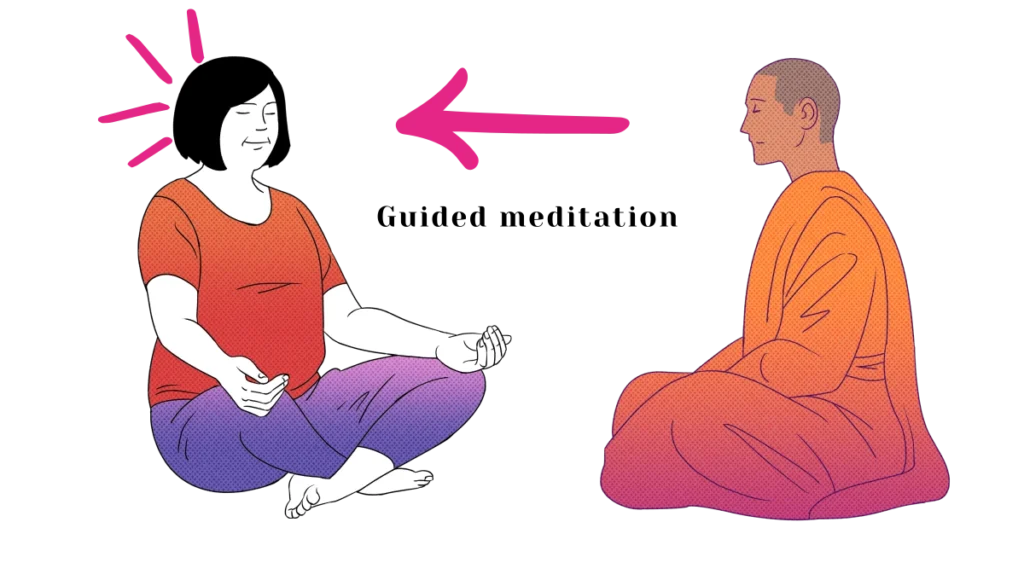
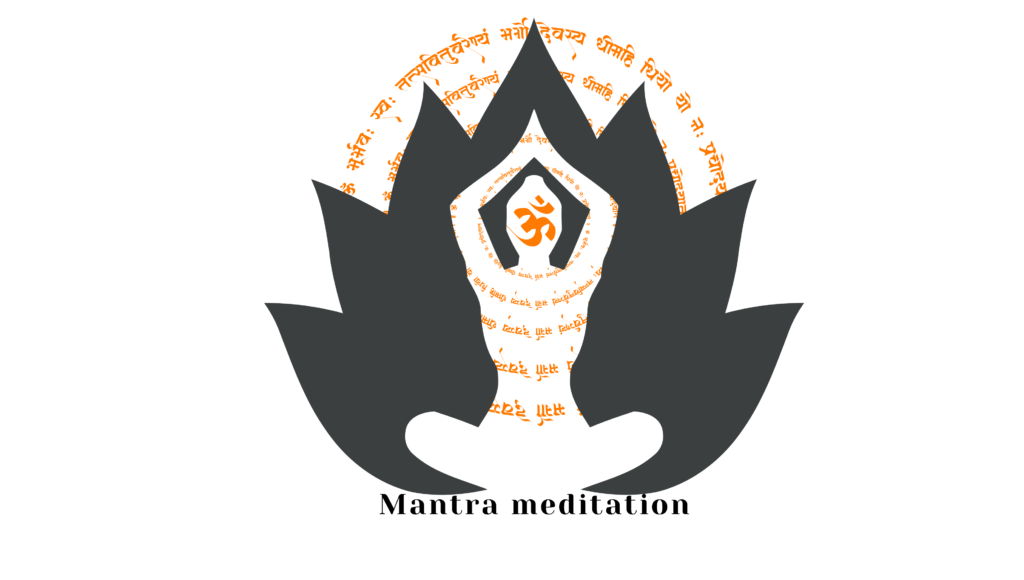
D. Mantra Meditation:
Mantra meditation involves repeating a mantra, a word or phrase, over and over again. The mantra can be anything that is meaningful to you, such as a religious or spiritual phrase, a word that represents your goals, or simply a calming sound.
As you repeat the mantra, focus your attention on the sound and the meaning of the words. Ignore all the thoughts or distractions that flow through the mind. The goal is to focus your attention on the mantra and to let go of any other thoughts. Mantra meditation can be practiced for any length of time, but it is often done for 10-20 minutes. It can be practiced sitting or lying down, and it is important to find a comfortable position where you can relax and focus.
Mantra meditation is a simple but powerful practice that can be used to reduce stress, improve focus, and promote relaxation. It is a great way to start your day or to wind down before bed.
Here are some additional benefits of mantra meditation:
Reduces stress and anxiety: Mantra meditation can help to reduce stress by calming the mind and body. When we are stressed, our bodies release hormones such as cortisol and adrenaline, which can lead to physical symptoms such as increased heart rate, sweating, and muscle tension. Mantra meditation can help to reduce these symptoms by promoting relaxation and reducing the production of stress hormones.
Improves focus: Mantra meditation can help to improve focus by training the mind to concentrate on a single object or thought. When we are able to focus our attention, we are better able to learn, remember information and complete tasks.
Promotes relaxation: Mantra meditation can help to promote relaxation by calming the mind and body. When we are relaxed, our bodies are able to rest and repair themselves. This can lead to a number of benefits, such as improved sleep, reduced pain, and increased energy levels.
If you are interested in trying mantra meditation, there are a few things you can do to get started:
Choose a mantra: The mantra can be anything that is meaningful to you, such as a religious or spiritual phrase, a word that represents your goals, or simply a calming sound.
Find a quiet place: Find a quiet place where you will not be disturbed. You must sit or lie down in a comfortable position (just don’t get sleepy).
Start repeating the mantra: Close your eyes and start repeating the mantra to yourself. Focus your attention on the sound and the meaning of the words.
Continue for 10-20 minutes: Continue repeating the mantra for 10-20 minutes. If your mind wanders, gently bring it back to the mantra without being intimidated.
End with a few minutes of silence: When you are finished meditating, spend a few minutes in silence. Allow yourself to relax and enjoy the feeling of peace and tranquillity.
Let me provide you with some special mantras (Vedic mantras) that have their own reverberation and special benefits:
Short one
- AUM
- HREEM
- KLEEM
- HOOM
- HAUM
- RAAM
Long one
- NAMAH SHIVAY
- AUM HREEM NAMAH
- AUM KLEEM NAMAH
- AUM HOOM NAMAH
- AUM HAUM NAMAH
*Caution: Pronunciation should be correct for better results.
Note: Mantra meditation is an advanced meditation technique that is more powerful than other types of meditation. It is not just for basic mental health such as anxiety relief or stress management but can be used to achieve greater things, such as spiritual enlightenment and psychic abilities.
IV. Overcoming Challenges and Fostering Consistency:
A. Dealing with Restless Thoughts:
It’s natural for thoughts to arise during meditation. Instead of fighting or suppressing them, practice observing them with curiosity and without judgment. See them as passing clouds in the sky of your mind. When you notice your attention drifting, gently bring it back to your chosen focal point, whether it’s the breath, a mantra, or a visualization. With patience and practice, you’ll develop greater mental clarity and the ability to remain centered amidst the fluctuations of the mind.
But as we know easier said than done, so let me tell you a a fact from Sanatan scriptures, an ancient knowledge that will make you understand why thoughts hinder meditation. This whole world is created by Lord Bramha but to create anything we must think it about in our mind or visualize it first. That visualization is called Maya.
In Hinduism, Maya is a concept that refers to the illusion of the material world. It is believed that the world we see around us is not real, but rather a projection of our own minds. This means that the thoughts that come to our minds are also not real, but rather illusions.
When we meditate, we are trying to free ourselves from the illusion of Maya. We do this by focusing on our breath and by observing our thoughts without judgment. As we do this, we begin to see that our thoughts are not real and that they do not have power over us.
The goal of meditation is not to suppress our thoughts but rather to see them for what they are: illusions. Once we see our thoughts for what they are, we can let them go and experience peace and freedom. So moral of the story is whatever thoughts come to your mind whether it a random thought or projection of some kind of guilt, is neither your fault nor your responsibility, and if it is not then why should you care, The only responsibility you have is to ignore them, as your thoughts are not worth it, there is no need to get intimidated by them.
B. Establishing a Routine:
Consistency is key in meditation. Establishing a regular practice helps integrate meditation into your daily life. Find a time that works best for you—a time when you can dedicate yourself fully to the practice without feeling rushed. It could be early morning, before or after work, or even during a lunch break. Start with shorter sessions that you can commit to and gradually increase the duration as your practice deepens. By making meditation a part of your routine, you’ll experience its benefits more fully and effortlessly.
C. Staying Motivated:
Meditation, like any skill, requires dedication and patience. Stay motivated by recognizing and celebrating even the smallest progress. Notice how meditation positively affects your overall well-being, such as increased calmness, improved focus, or enhanced emotional resilience. Seek inspiration from experienced practitioners, join meditation groups, or participate in retreats or workshops to deepen your understanding and connect with a supportive community. Remember, meditation is a lifelong journey, and each moment spent in stillness brings you closer to self-discovery and inner peace.
V. Taking Meditation Further:
A. Exploring Different Advanced Types of Meditation :
As you become more comfortable with meditation, you may want to explore different techniques to expand your practice. Consider trying mantra meditation (Transcendental), where you repeat a sacred word or phrase to focus your mind. Explore walking meditation, which involves combining meditation with slow, mindful walking, allowing you to connect with your body and surroundings. You can also experiment with body scan meditation, where you systematically bring attention to different parts of your body, cultivating relaxation and body awareness.
B. Deepening the Practice:
To deepen your meditation practice, consider attending meditation retreats or workshops led by experienced teachers. These immersive experiences provide an opportunity to delve deeper into different meditation techniques, receive guidance, and connect with like-minded individuals on a similar path. Additionally, books, podcasts, and online courses by renowned meditation teachers can offer valuable insights and further expand your knowledge and practice.
Conclusion:
Meditation can be intimidating for beginners, but it’s worth it. With patience, consistency, and an open mind, you can achieve anything. There is no right or wrong way to meditate. Each session is an opportunity to explore and deepen your connection with yourself. As you commit to regular meditation, you’ll begin to witness the transformative power it holds, then stress or anxiety about these kinds of problems will start vanishing, just like smoke vanishes in thin air ‘fushhhhh’. Start small and start today.
Consistency is Key: Regular practice is essential to experience the full benefits of meditation. Meditate daily, starting from 5 min.
Start Small: If you’re new to meditation, start with shorter sessions and gradually increase the duration as you become more comfortable.
Be Gentle with Yourself: Don’t get discouraged if your mind wanders during meditation. It’s normal and part of the process. Simply acknowledge the thoughts and gently guide your attention back to your breath or chosen focal point.
Experiment with Different Techniques: Explore various meditation techniques to find the ones that resonate with you.
Create a Sacred Space: Consider creating a dedicated meditation space that feels peaceful and inviting. This can enhance your focus and make your practice more enjoyable.
Seek Guidance: If you find it challenging to establish a meditation routine on your own, consider joining a meditation class or seeking guidance from an experienced teacher.
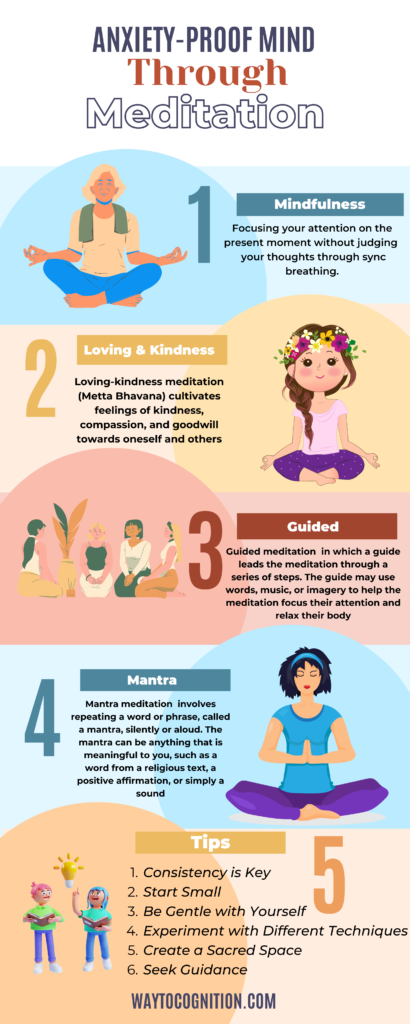
Meditation is a journey, not a destination. Embrace the stillness and let it guide you toward a life of inner peace and well-being.
FAQs
Can meditation cure anxiety?
While basic meditation is not a cure for severe anxiety, but is a very powerful tool to overcome anxiety it can significantly reduce its symptoms and help you manage stress better. Advanced meditation is something else, it can cure any mental or psychological illness, but anxiety is nothing.
How long will it take for me to get results?
The effects of meditation vary for each individual. Some people experience immediate relief, while others may need several weeks of regular practice to notice significant changes. It depends on two things 1- Choose your way of meditation wisely from the above 4 types. 2- Be consistent.
Can I meditate if I have a busy schedule?
Absolutely! Even a few minutes of meditation daily can make a difference. Find pockets of time throughout your day, such as during lunch breaks or before bed, to fit in your meditation practice.
